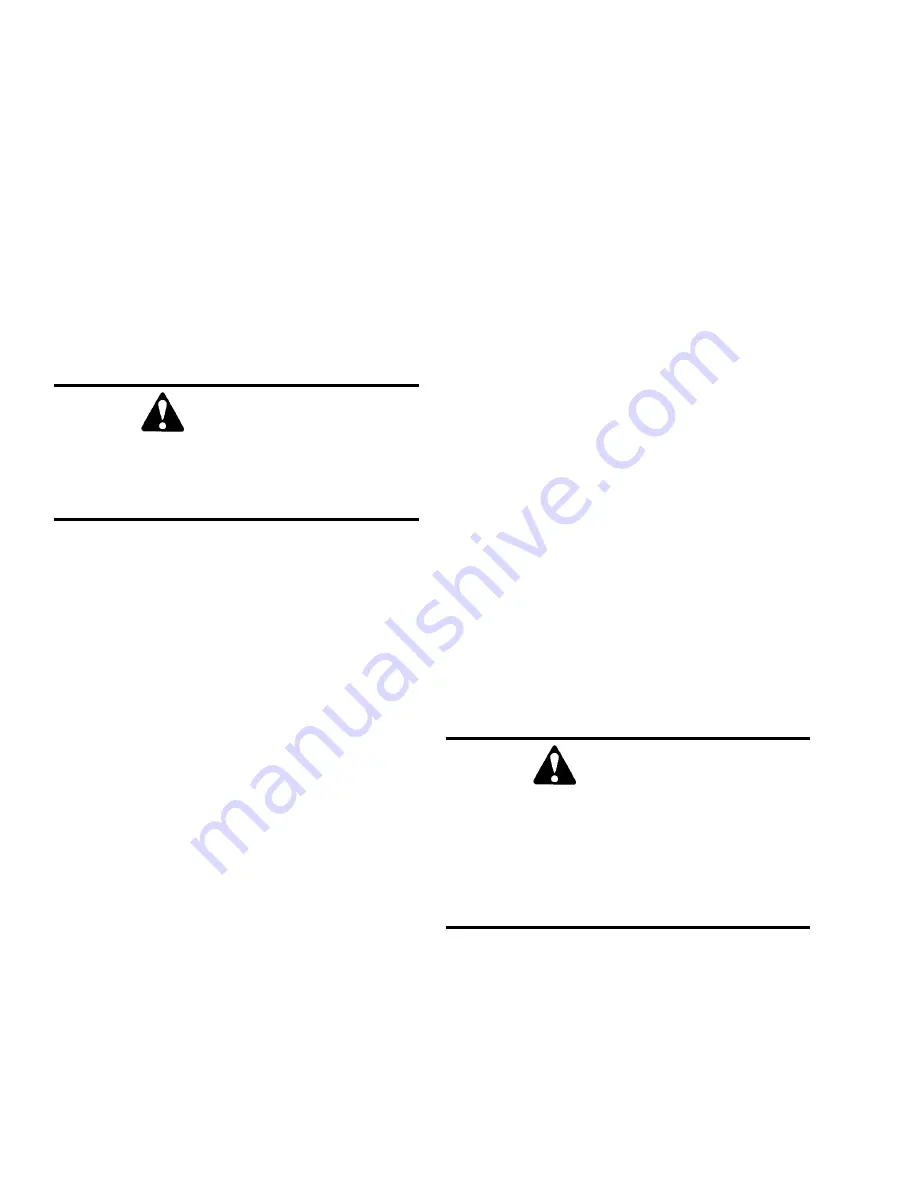
sible without spilling asphalt. Close one Flow Gate and
then the other. Lowering the Hopper substantially
decreases the weight being lifted by each Flow Gate.
Make sure Screed Extensions are also closed.
Do NOT pull Paver with another vehicle except in an
emergency situation (loss of hydraulic power or
Engine failure). The Track Control Levers MUST be
locked in the “float” position. Remove the Lock Lever
and place control levers all the way forward. Replace
the Lock Lever. Do NOT pull the Paver backwards! Do
NOT pull the Paver at high speeds
When paving uphill, lower the Hopper as needed, plac-
ing more weight directly over the Tracks to increase
traction.
Handling Asphalt Spills
NOTE:
ALWAYS remove asphalt spill (large or
small) from the path of the Paver Tracks to pre-
vent loose asphalt from getting in the Tracks , or
building up on the Sprockets.
The following procedure should be used if the asphalt
truck drives away from the Paver when loading or
pushing the truck, resulting in a large asphalt spill in
front of the Paver:
1. Stop the Paver.
2. Lower the Hopper as low as possible without
spilling more asphalt.
3. Close one Flow Gate and then the other.
4. Windrow spilled asphalt material to the center and
in front of the Paver, making sure the asphalt is
removed from the path of the Paver Tracks.
5. Move the Track Control Levers to “forward”, con-
tinuing to pave with asphalt previously gravity fed
from the Hopper. As the asphalt head from the
Hopper begins to run thin, the windrow asphalt
should be at the leading edge of the Screed. If this
is the case, continue to pave using the windrow
CAUTION
Do NOT attempt to move HOT asphalt mix with
your hands or feet. Contact can cause serious
skin burns!
asphalt, opening both Flow Gates as the windrow
asphalt begins to run thin.
If this is not the case, open both Flow Gates
approximately 1/3, maintaining a full head of
asphalt at the leading edge of the Screed until the
leading edge strikes the windrow asphalt. Continue
to pave.
NOTE:
Failure to follow this procedure, in the
event of asphalt spills, will result in asphalt
buildup and eventual damage to the Flow Gate
Cylinders and the Tracks.
HIGHWAY TRAVEL
For short distance highway travel, attach a SMV (Slow
Moving Vehicle) Emblem, purchased locally, to the
back of the Paver
NOTE:
ALWAYS follow ALL state and local reg-
ulations regarding the operation of equipment on
or across public highways! Also, whenever any
appreciable distance exists between jobsites or if
operation on public highway is prohibited, BE
SURE to transport the Paver using a vehicle of
appropriate size and weight.
TRANSPORTING BETWEEN
JOBSITES (Figs. 11-13)
When transporting the Paver, know the overall height
to allow clearance of obstructions. Remove or tape
over the slow moving vehicle emblem (SMV) if it will
be visible to traffic.
Tie-down slots are provided on the front of the
hydraulic reservoir portion of the frame and the lower
rear sides of the backwall. Chains can be inserted
through these brackets and slots to secure the Paver
while transporting.
CAUTION
ALWAYS abide by the following recommended
procedures and guidelines, when attempting
to use ramps to load the Paver onto (or unload
it from) a truck or trailer. Failure to heed can
result in damage to equipment and a serious
personal injury or death!
907389/AP297
28
Printed In U.S.A.
Discount-Equipment.com
















































